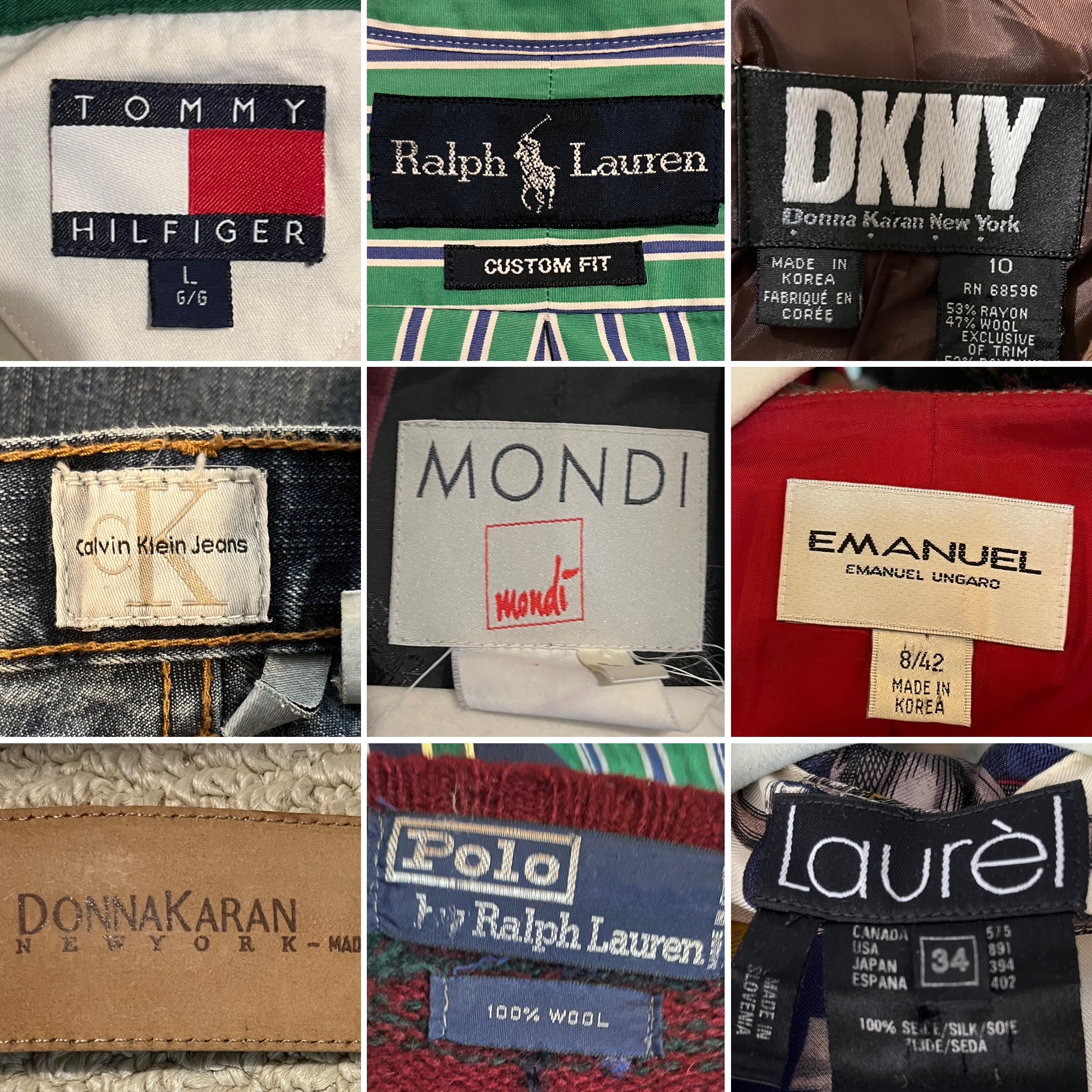Understanding Clothing: The Importance of Textile Options in Your Closet
The selection of fabric in garments plays a crucial duty in both visual appeals and capability. Different products use differing levels of breathability, resilience, and comfort, straight affecting the wearer's experience. Comprehending these nuances can enhance one's closet significantly. Yet, lots of ignore just how these choices can influence not just personal style, yet likewise sustainability. What material decisions could redefine your wardrobe and straighten it with both design and duty?
The Function of Fabric in Style and Functionality

Common Material Kinds and Their Characteristics
When picking clothing, comprehending the features of usual fabric kinds is vital for making notified options. Cotton, a widely-used natural fiber, is known for its breathability, flexibility, and soft qualities, making it suitable for informal wear and everyday garments. Linen, one more natural alternative, flaunts excellent moisture-wicking buildings and an unique appearance, suitable for warm climates.Wool, often preferred for its heat and durability, varies in fineness; merino wool is soft against the skin, while coarser kinds are used for outerwear. Artificial textiles like polyester and nylon supply toughness and resistance to creases, making them popular for activewear and travel garments. Blends, which combine all-natural and artificial fibers, can enhance performance while keeping comfort. By recognizing these material characteristics, individuals can choose garments that straightens with their lifestyle and visual preferences.
Breathability and Convenience: Choosing the Right Fabrics for Different Climates
Picking the ideal fabrics for different environments can substantially enhance comfort and overall wearability. Breathable materials are essential in warm climates, as they enable air circulation and wetness evaporation. Fabrics such as cotton, linen, and moisture-wicking synthetics properly attract sweat far from the body, maintaining the wearer cool and dry. Alternatively, in chillier climates, thicker fabrics like woollen or fleece supply insulation while preserving breathability, making sure warmth without overheating.Additionally, the selection of textile weight plays an important duty; light-weight fabrics are more suitable for summertime, whereas much heavier options are suited for winter wear. Understanding the unique residential properties of each fabric makes it possible for individuals to clothe suitably for differing weather problems. Inevitably, picking breathable and comfy fabrics customized to particular climates can considerably improve day-to-day convenience and enhance the general experience of wearing apparel.
Resilience and Treatment: Exactly How Fabric Affects Long Life of Your Wardrobe
Selecting the appropriate products can considerably affect the longevity and treatment needs of a wardrobe. Fabrics such as cotton and polyester are understood for their resilience and ease of maintenance, making them excellent for day-to-day wear. In comparison, fragile materials like silk and shoelace need even more cautious handling and specialized cleaning methods, which can enhance the moment and initiative needed for care. Branded Clothing.Durability is additionally affected by the material's weave and surface; tightly woven fabrics often tend to stand up to wear and tear better than loosely woven choices. Furthermore, synthetic blends usually supply boosted resilience, combining the very best high qualities of numerous fibers.Understanding the treatment directions for each textile is necessary, as improper drying out or cleaning can result in premature wear. Inevitably, picking sturdy materials can result in a longer-lasting closet, reducing the regularity of replacements and contributing to a more sustainable fashion choice
The Impact of Material on Fit and Silhouette

Lasting Fabric Selections: Making Eco-Friendly Choices
The impact of material prolongs beyond fit and shape to include environmental factors, triggering a growing rate of interest in sustainable fabric options. Environment-friendly fabrics, such as natural cotton, hemp, and Tencel, are obtaining traction amongst customers that focus on sustainability in their closets. These materials are usually created with less chemicals and water, lowering their ecological footprint.Additionally, recycled materials, made from post-consumer waste, use an ingenious option to the fabric industry's contamination trouble. Brands increasingly welcome transparency in their sourcing approaches, enabling customers to make enlightened decisions regarding their purchases.Choosing lasting textiles not only supports ethical practices but over at this website additionally urges the style industry to embrace more accountable manufacturing techniques. As understanding of ecological concerns climbs, people are prompted to review the long-lasting influence of their textile choices, cultivating a movement towards a more lasting and environmentally mindful strategy to style.
Elevating Style: Exactly How Fabric Can Change a Clothing
While several might concentrate on color and cut when selecting an outfit, the choice of fabric plays a necessary function in elevating design and improving total appearance. Different products convey unique moods and messages; as an example, silk exhibits luxury and elegance, while denim provides an informal, kicked back ambiance. The appearance and drape of a material can considerably alter the shape, with organized materials giving a refined look and softer ones producing a more fluid, kicked back aesthetic.Moreover, the weight of the fabric influences wearability across seasons. Lightweight textiles like bed linen and cotton are perfect for summer season, while heavier products such as wool and velvet supply heat and sophistication in chillier months. Recognizing fabric residential properties, such as breathability and stretch, additionally empowers people to make informed selections that improve comfort without endangering design. Eventually, the right material can change a look at this web-site clothing from normal to amazing, making it an important consideration in any kind of closet.
Frequently Asked Concerns
How Do I Recognize the Material Content of My Clothes?
To determine fabric web content, one can check out care labels, conduct burn examinations for fiber recognition, or get in touch with material examples. These techniques assist separate materials, making sure notified selections for apparel care and upkeep in day-to-day wear.
Can Textile Choice Affect My Mood or Confidence?
Material choice can significantly affect an individual's mood and self-confidence. Branded Clothing. Specific materials may stimulate sensations of convenience or sophistication, while others can really feel unflattering or limiting, ultimately influencing self-perception and emotional wellness throughout the day
What Fabrics Are Finest for Sensitive Skin?
For individuals with sensitive skin, all-natural materials like bed linen, bamboo, and cotton are frequently recommended. These products are breathable, hypoallergenic, and less likely to cause inflammation, making them suitable selections for comfort and skin health and wellness.
How Do I Properly Clean and Look After Different Fabrics?
To correctly care and clean for different fabrics, one should take into consideration each product's details demands, consisting of temperature settings, cleaning agents, and drying techniques, making certain long life and maintaining the fabric's original high qualities for ideal usage.
Are There Specific Fabrics for Athletic or Efficiency Put On?
Athletic or efficiency wear frequently utilizes textiles such as polyester, nylon, and spandex. These products are developed for moisture-wicking, breathability, and flexibility, boosting motion and convenience during physical tasks while providing sturdiness and support. Alternatively, in cooler climates, thicker fabrics like woollen or fleece provide insulation while retaining breathability, ensuring heat without overheating.Additionally, the choice of material weight plays an essential function; light-weight materials are more suitable for summer season, whereas larger options are matched for wintertime wear. In contrast, delicate materials like silk and shoelace call for more careful handling and specialized cleaning methods, which can enhance the time and effort needed for care.Durability is likewise influenced by the fabric's weave and finish; snugly woven fabrics often tend to resist wear and tear far better than loosely woven options. In comparison, inflexible textiles can limit movement yet read what he said give a classic, polished look.Moreover, the density and structure of the textile can affect the aesthetic understanding of body shape. The influence of textile prolongs past fit and shape to include ecological variables, triggering a growing passion in lasting material choices. The appearance and drape of a material can dramatically alter the shape, with organized textiles providing a sleek look and softer ones producing an extra fluid, relaxed aesthetic.Moreover, the weight of the textile influences wearability across periods.